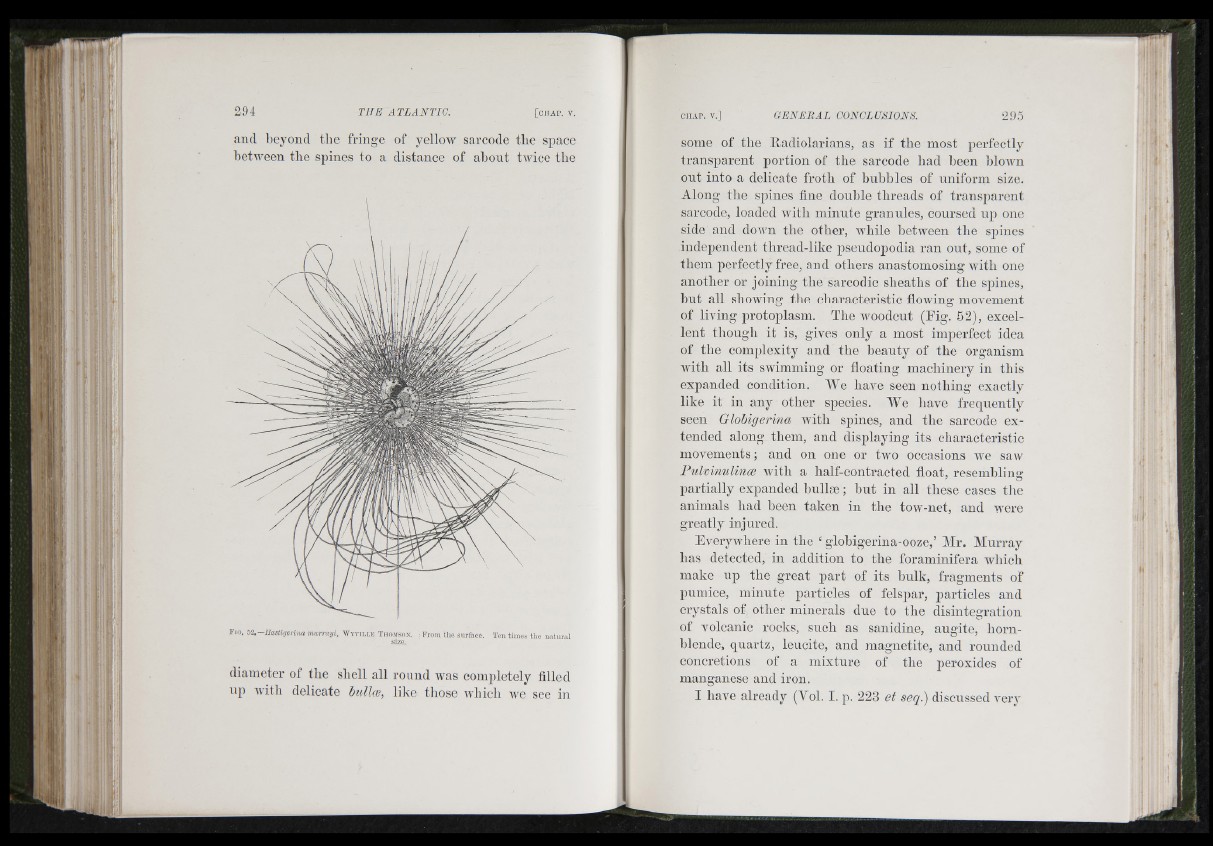
, <1 * ;
IS
, 'to li:
r
’•f 15
Mil
and lieyond the fringe of yelloAV sarcode the space
between the spines to a distance of ahout twice the
Fio, 32.-H a s tig e rin a murrayi, W y t i l l e Thomson. From tho surface. Ten times the na tura l
si2 e.
diameter of the sliell all round was completely filled
up AA’ith delicate hullce, like those AA'bich aa'b see in
some of the Radiolarians, as if the most perfectly
transparent portion of the sarcode had heen hloAAm
ont into a delicate froth of bnhhles of uniform size.
Along the spines fine double threads of transparent
sarcode, loaded Avith minute grannies, coursed up one
side and doAvn the other, Avhile hetAA’een the spines
independent thread-like pseudopodia ran out, some of
them perfectly free, and others anastomosing with one
another or joining the sarcodic sheaths of the spines,
but all showing tbe characteristic flowing moA'cment
of living protoplasm. The Avoodcut (Fig. 52), excellent
though it is, gives only a most imperfect idea
of tbe complexity and tbe beauty of the organism
witb all its SAvimming or floating machinery in tbis
expanded condition. We have seen nothing exactly
like it in any other species. We have frequently
seen Glohigerina Avitb spines, and tbe sarcode extended
along them, and displaying its characteristic
movements; and on one or two occasions Ave saw
Fiilvinulince Avitb a half-contracted float,^ resemblinoO'
partially expanded bullge; b u t in all tbese cases tlie
animals bad been taken in tbe tow-net, and were
greatly injured.
EveryAvbere in tbe ‘ globigerina-ooze,’ Mr, Murray
has detected, in addition to tbe foraminifera which
make np the great part of its hulk, fragments of
pumice, minute particles of felspar, particles and
crystals of other minerals due to the disintegration
of volcanic rocks, such as sanidine, augite, hornblende,
quartz, leucite, and magnetite, and rounded
concretions of a mixture of the peroxides of
manganese and iron.
I have already (Vol. I. p . 223 et seq.) discussed very